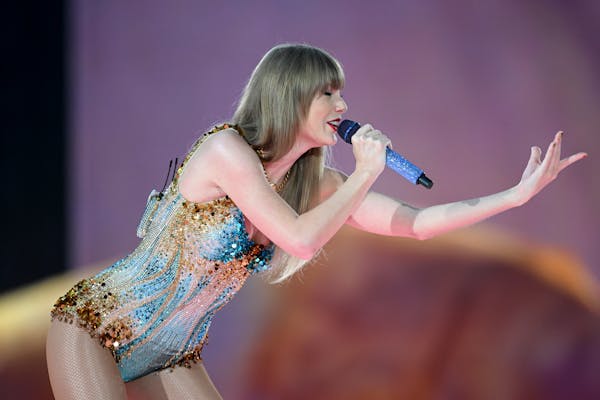The tens of thousands of Swifties who descended on downtown Minneapolis last weekend had good reason to book the night train home — and despite some initial hiccups, Metro Transit says its extended light-rail service went, as Swift might sing, all too well.
The weekend was one of Minneapolis' biggest since the COVID-19 pandemic began, as the city hosted both the annual Twin Cities Pride festival and Taylor Swift's two sold-out shows at U.S. Bank Stadium. The activity provided an economic boost to rival the Super Bowl and Final Four.
Metro Transit, operated by the Metropolitan Council, ran six extra Blue Line trains and four extra Green Line trains ran on Friday, and seven extra Blue Line trains and four extra Green Line trains Saturday to clear the platform after the shows ended around 11:15 p.m.
An additional train ran on each line 60 minutes and 90 minutes after each show. No public safety issues were reported from the event, according to Metro Transit.
The agency cleared the platform in a little less than an hour both nights, according to a presentation by Brian Funk, Metro Transit deputy general manager-chief operations officer, at the Met Council Transportation Committee meeting Monday.
Employees set up pathways for an organized exit, separating riders into Green and Blue Line queues. Riders purchased light-rail tickets at various ticket booths, or through a QR code posted outside U.S. Bank Stadium station. There were no material costs, and labor costs will be determined after timesheets have been processed, Drew Kerr, senior manager for Metro Transit Communications, said in a written statement.
Although lines stacked up, they moved at a good clip with trains heading toward downtown St. Paul and Bloomington arriving in quick succession. Station ambassadors helped guide passengers at the station, and the light-rail field operations team filled trains with hundreds of Swifties.
In addition to regularly-scheduled staff, there were 24 ambassadors and more than a dozen police officers and rail supervisors who helped direct crowds each night, Kerr said. There were also about a dozen additional train operators who supported post-event service.
About a week before the concerts, Metro Transit announced it couldn't promise additional light-rail service, citing staffing shortages. During regular service, the last train scheduled to depart from U.S. Bank Stadium Station was at 11:31 p.m., around the time Swift was expected to end her 3 ½ hour show.
But the following week, the agency announced it would extend light-rail service Friday and Saturday to accommodate the two shows.
Amalgamated Transit Union employees who worked overtime received double-overtime pay, Kerr said.
Deb Barber, who chairs the Met Council Transportation Committee, said at the Monday meeting that she was glad the agency helped foster community through its extended service.
"It's really fun to see that not only we did everything, but people are having fun," Barber said. "And that sense of community both within Metro Transit and out with the community was really there."
While planning for extra service, Funk said Metro Transit tried to strike a balance of instilling confidence in passengers without over-promising service.
Although the agency is accustomed to planning for large events and understanding resource needs, he said, it's difficult to plan operations with exact certainty.
Kerr said Metro Transit is prepared to accommodate more large events in the future.
"We have never failed to support large events in the Twin Cities and will continue to successfully serve these events moving forward," he said.
More coverage





